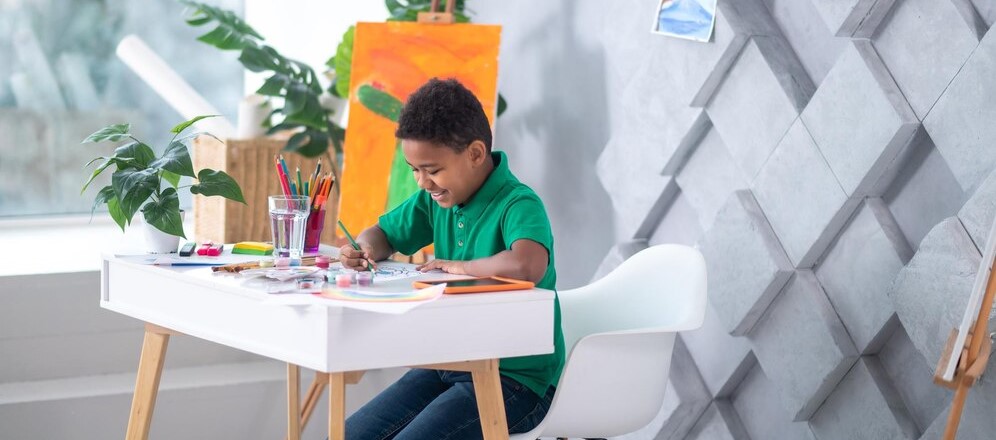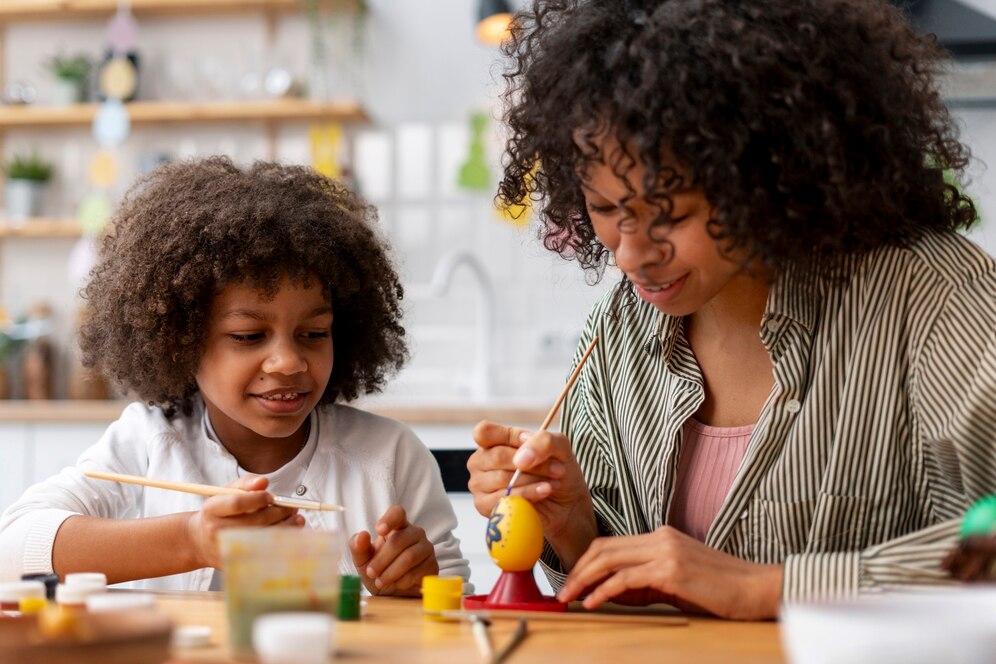How Space, Routine, and Parental Attitude Shape Learning
In today’s fast-paced world, the home is more than just a place to eat and sleep—it’s a critical foundation for a child’s learning journey. Whether your child attends school physically or learns virtually, the home environment greatly influences how well they absorb, retain, and apply knowledge.
Let’s explore how space, routine, and parental attitude can either boost or hinder a child’s ability to learn effectively.
1. SPACE:
The Power of a Learning Zone

A child’s physical environment plays a significant role in how focused and engaged they are during learning. A designated study area sends a strong message: “This is where learning happens.”
Tips to create an effective learning space:
- Choose a quiet, well-lit corner in the house, free from distractions like TV and toys.
- Equip it with essentials: table, chair, learning materials, and good lighting.
- Keep it organized—clutter can overwhelm and distract learners.
- Add personal touches like a motivational quote, a calendar, or a bookshelf to make it inviting.
Even in small spaces, consistency matters. A child who knows where their “learning zone” is will transition into study mode more easily.
2. ROUTINE:
The Backbone of Consistency

Children thrive on routine. A predictable schedule helps their brains know what to expect and prepares them to be mentally ready for tasks like reading, homework, or creative play.
How to build a supportive learning routine:
- Set specific times for study, play, meals, and sleep.
- Include breaks to refresh the brain—short walks, snacks, or movement games.
- Avoid last-minute cramming. Instead, promote daily learning habits—reading for 20 minutes, reviewing schoolwork, or practicing new skills.
- Involve your child in creating the schedule. This fosters ownership and responsibility.
When routines are well-established, children are more likely to develop self-discipline and time management skills—traits that benefit them for life.
3. PARENTAL ATTITUDE:
The Emotional Climate of Learning

Children are always watching, absorbing not just what we say, but how we say it. Your attitude toward learning directly shapes how your child views education.
Ways to cultivate a positive learning attitude at home:
- Celebrate effort over perfection. Praise persistence, curiosity, and progress.
- Show genuine interest in your child’s schoolwork—ask questions, review their notebooks, attend school events.
- Avoid using negative phrases like “You’re not good at math” or “This is too hard for you.” Instead, use growth mindset language: “You’re still learning it. Let’s try again together.”
- Be a role model—read in front of your child, explore new topics, or engage in problem-solving tasks.
A warm, supportive home atmosphere encourages children to take risks, ask questions, and build confidence in their learning abilities.
In Summary
Creating a learning-friendly home environment doesn’t require expensive tools or fancy furniture. It requires intentionality—setting up a space that promotes focus, building routines that bring stability, and maintaining an attitude that supports growth.
By making thoughtful adjustments in these three areas—space, routine, and parental attitude—you’ll empower your child not just to learn better, but to love learning.
What simple change will you make today to create a more learning-friendly environment at home? Let us know in the comments!


Very educative article for parents and guardians, Great!! Thanks for this useful contribution to our knowledge on creating children learning environments especially at home 🙏